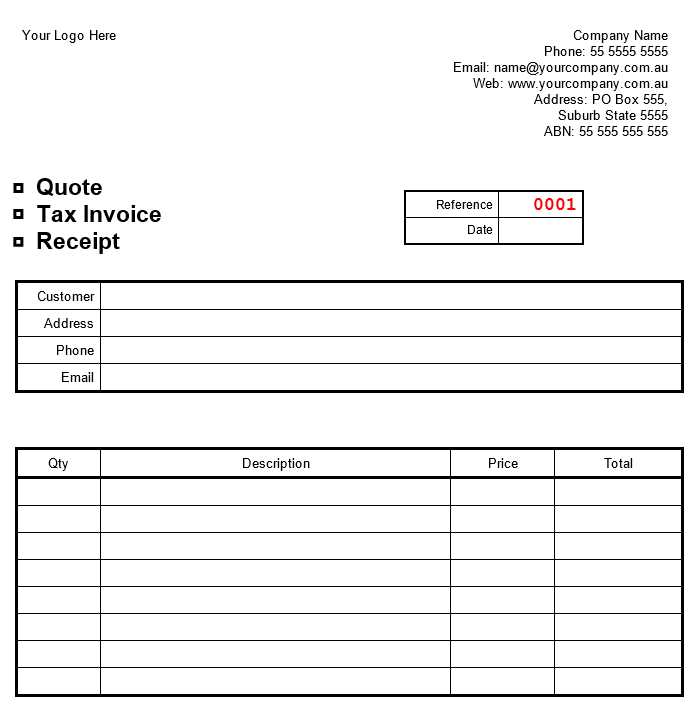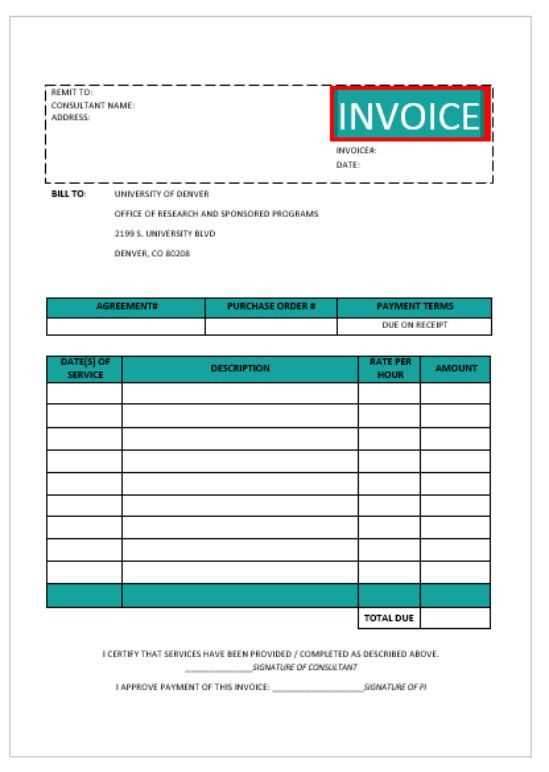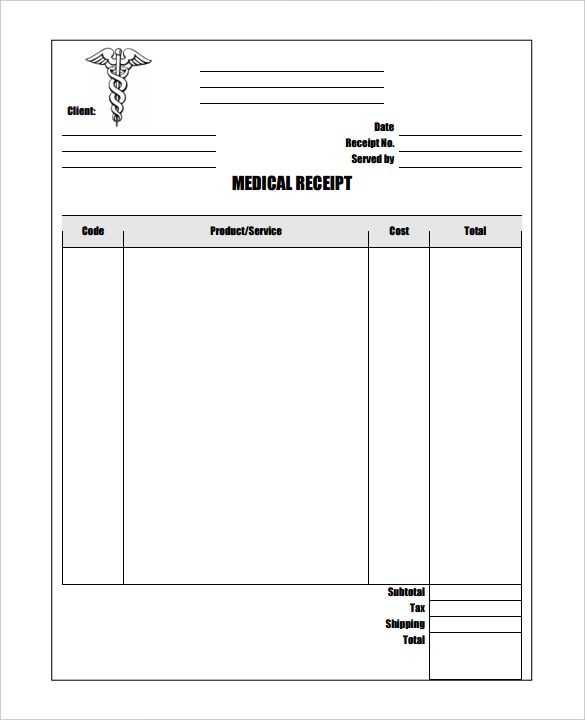
Key Elements to Include
A well-structured medical invoice receipt template ensures clear communication between healthcare providers and patients. Include these essential elements in every receipt:
- Provider Information: List the full name, address, phone number, and professional license number of the healthcare provider.
- Patient Details: Include the patient’s name, address, and contact information. Add a reference or patient ID number if needed.
- Invoice Number: Use a unique identifier for each invoice to ensure easy tracking and management.
- Date of Service: Clearly specify the date(s) when the medical services were provided.
- Description of Services: Break down the treatment or service provided, including any tests, procedures, or consultations.
- Charges: List the cost for each service rendered, including any applicable taxes or fees.
- Total Amount Due: Clearly state the total amount owed, including any deductions, discounts, or payments already made.
- Payment Method: Indicate whether the payment was made via insurance, credit card, cash, or another method.
- Payment Due Date: Set a clear deadline for the payment.
- Contact Information: Provide information for billing inquiries or customer service.
Formatting Tips for Clarity
Choose a simple, clean design to enhance readability. Consider the following formatting tips:
- Font Style: Opt for a legible font like Arial or Times New Roman with a size between 10 and 12 pt.
- Spacing: Ensure adequate spacing between sections and elements for a neat, professional look.
- Consistent Alignment: Align text and numbers in a way that makes it easy to follow. For example, right-align monetary values and left-align descriptions.
- Tables: Use tables to organize charge breakdowns and payment history. This helps avoid clutter and makes the invoice easier to follow.
Additional Recommendations
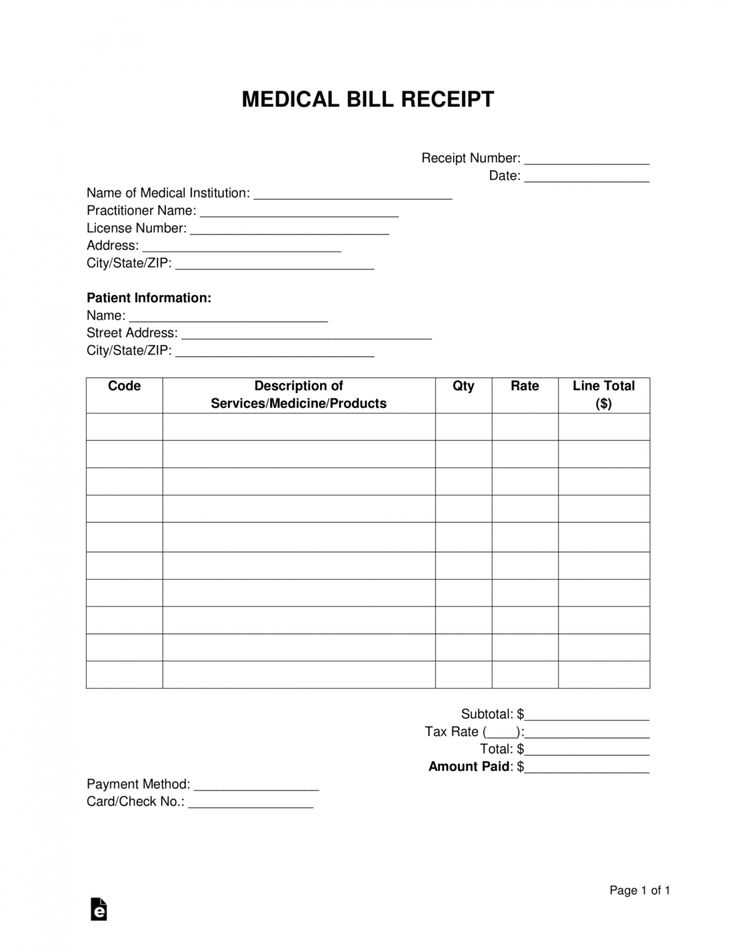
For a smooth billing experience, you may want to include these extra sections in your receipt template:
- Insurance Information: Include the insurance provider name and policy number if applicable, along with any co-pays or coverage details.
- Notes: Leave space for any additional remarks, such as medical advice or reminders regarding follow-up care.
- Refund Policy: Provide clear terms regarding refunds or adjustments to the charges.
Tailoring your medical invoice receipt template to meet these standards will reduce confusion and improve both patient experience and administrative efficiency.
window.__oai_logHTML?window.__oai_logHTML():window.__oai_SSR_HTML=window.__oai_SSR_HTML
When working with a medical invoice receipt template, focus on key elements that make the document clear and professional. Use a simple layout with all necessary details easily visible. Include the patient’s name, date of service, items or services provided, their costs, and any applicable tax or payment information. Provide a section for payment methods and the total amount due.
Date.now();requestAnimationFrame((function(){window.__oai_logTTI?window.__oai_logTTI():window.__oai_SSR_TTI=window.__oai_SSR_TTI
For seamless creation, use a template that allows quick customization. Adjust fonts, colors, and logo placement to match your practice’s branding while keeping the document professional. Make sure to include a contact section for any inquiries about charges or procedures.
Date.now()}))
Optimize the design for clarity by spacing out information and maintaining legibility. Avoid clutter by keeping text concise and only listing necessary charges. Ensure there’s enough room for any additional notes or billing explanations.
Medical Invoice Receipt Template
Customize your template to reflect your practice’s unique needs. Include any necessary legal or insurance-related details, such as insurance codes or policy numbers. Double-check for accuracy to ensure the invoice aligns with your accounting practices and reflects all services rendered.
How to Create a Clear and Professional Medical Invoice Receipt
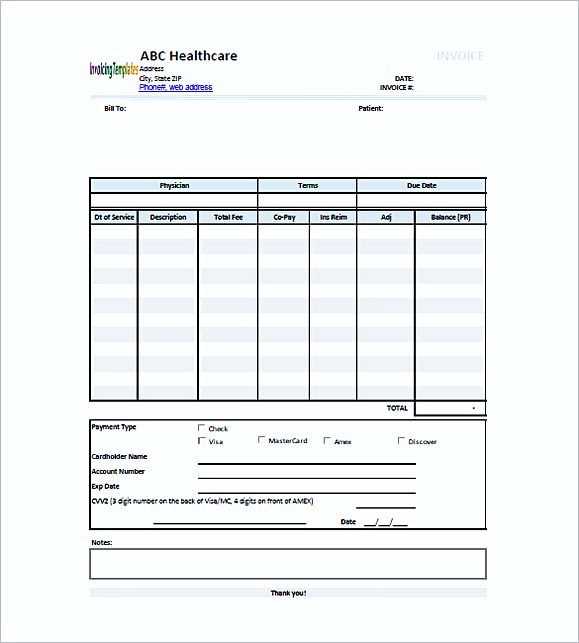
Create a template with a clean structure, so both patients and insurance companies can quickly review the invoice. Consider adding a payment schedule or due date to avoid confusion. A well-organized format will help prevent errors and improve communication with clients.
Key Information to Include in Your Medical Invoice Receipt
Ensure the invoice includes the patient’s details, a list of services provided, itemized costs, taxes, total charges, and payment instructions. This helps both parties understand the charges clearly and assists with insurance claims when necessary.
Best Practices for Customizing a Medical Invoice Receipt Template for Your Practice
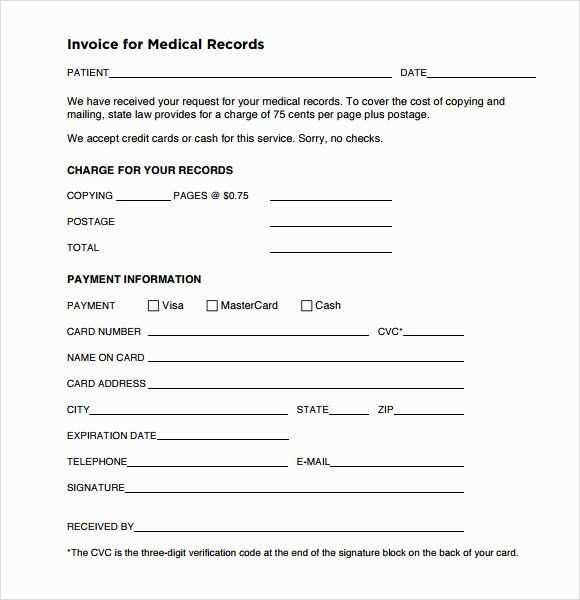
Personalize your template by adding your practice’s name, logo, and contact information. Choose colors and fonts that reflect your brand, but don’t sacrifice readability. Always update the template to reflect any changes in your services or pricing structure.
AttachSearchReason
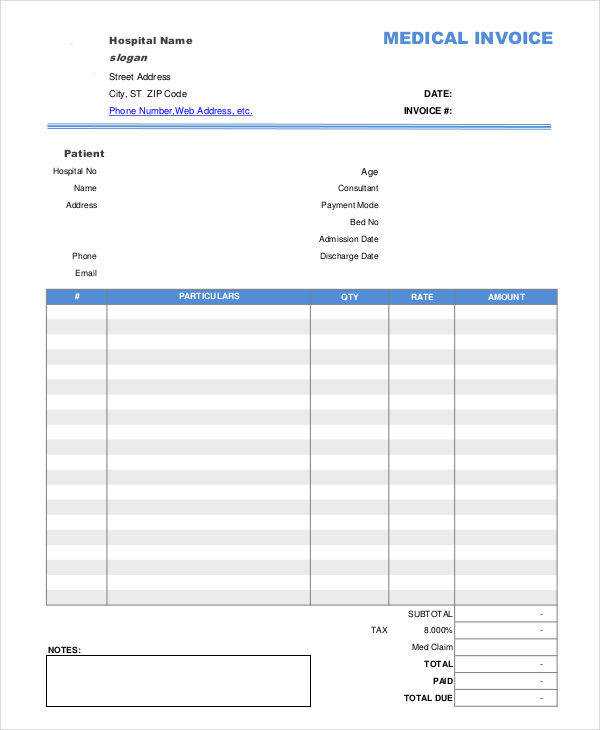
Make sure your template includes a section for notes, such as reasons for specific charges or procedures. This section can be useful for both patients and insurance companies to understand the context of each service or item listed on the invoice.
